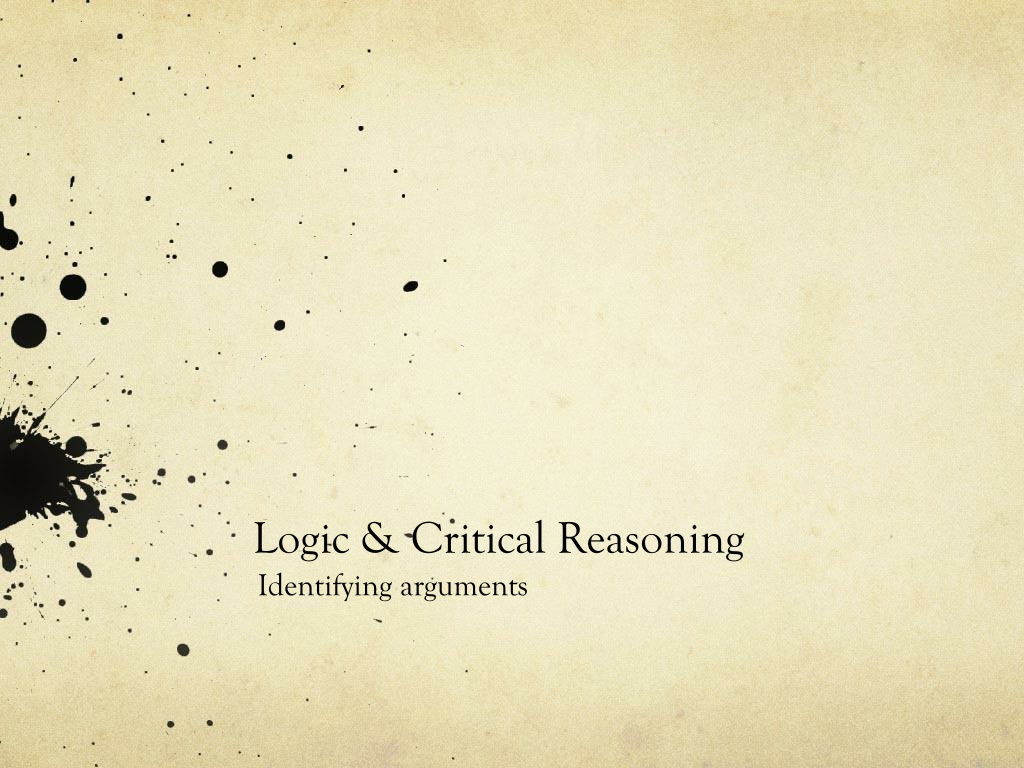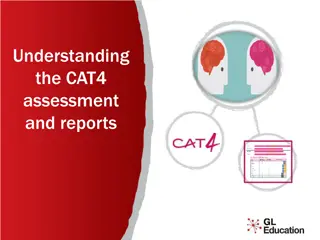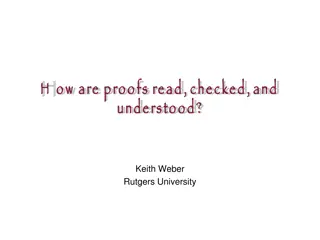Understanding Logic and Critical Reasoning: Identifying Arguments
In the study of logic and critical reasoning, identifying arguments is a fundamental task. Arguments consist of premises supporting a conclusion, and they can be identified by specific indicators and techniques. Understanding argument structure and types of support, such as deductive and inductive, is essential in analyzing and evaluating arguments effectively.
Uploaded on Sep 11, 2024 | 2 Views
Download Presentation

Please find below an Image/Link to download the presentation.
The content on the website is provided AS IS for your information and personal use only. It may not be sold, licensed, or shared on other websites without obtaining consent from the author. Download presentation by click this link. If you encounter any issues during the download, it is possible that the publisher has removed the file from their server.
E N D
Presentation Transcript
Logic & Critical Reasoning Identifying arguments
The Object of Analysis In logic and critical reasoning one studies argumentation. From the perspective of critical reasoning an argument is specific kind of object of analysis. An argument is not the same thing as a disagreement. An argument has parts.
Definition of an Argument An argument is a non-empty set of claims some of which are intended to support a single claim. The claims that do the supporting are called the premises. The claim that is supported is called the conclusion.
Argument Structure Arguments have structure. Atomic arguments have a single set of premises intended to establish a single conclusion. Complex arguments use multiple atomic arguments to establish either a single conclusion or multiple conclusions.
The Two Central Claims of an Argument An argument makes two central claims: The factual claim is that the premises are true. The inferential claim is that the premises support the conclusion.
Two Types of Support Deductive support occurs when the author of the argument intends it to be the case that the truth of the premises makes it the case that the conclusion could not be false. Inductive support occurs when the author of the argument intends it to be the case that the truth of the premises makes the conclusion likely to be true. True premises necessitate a true conclusion True premises makes the conclusion probable.
Identifying arguments I The first key task of critical thinking is to identify when an argument is present in speech and writing. There are two main techniques for identifying arguments are: Using indicators phrases as a way to find parts of an argument. Learning to distinguish argument-like passages from actual argument passages.
Indicators Premise indicators: Since Given that For Because For the reason that In view of the fact that Granted that Seeing that Conclusion indicators Therefore Thus Hence Consequently It follows that Which proves that So
Distinguishing Arguments from Non-Arguments Some passages look like they contain an argument, when they do not actually contain an argument. Sometimes this is the case because a premise or conclusion indicator is present even though it is not signaling the presence of what it is generally intended to signal a premise or a conclusion.
Reports Reports are passages in which the primary function is to report what a person said. Since the primary goal of the passage is to report what someone said, reports are not arguments. The primary goal of an argument is to establish the truth of a claim by providing reasons to believe the claim. A report can be a premise or a conclusion, but alone a report is not an argument.
Report: Example The New York Times reports that the CEO of British Petroleum has argued that because of the Deepwater Disaster, it can no longer supply funds to the locals that live on the Gulf Coast. Although the premise indicator because is present, since the passage in which it occurs is a report, the New York Times is not making an argument.
Explanation An explanation is a passage in which a given phenomenon is taken to be true and one offers an account of why the phenomenon exists. Explanations can be distinguished from arguments via the why-test. If the authors primary aim is to say why something is true, then the passage is an explanation. If the authors primary aim is to establish that something is true, then the passage is an argument.
Explanation: Example Because the refraction of light depends on the medium through which it is traveling our experience of what an oar placed in water looks like, is different than what is actually present. We see an object, such as an oar or a pencil, submerged in water as slightly bent, when in fact it is not actually bent. We see it as bent because light traveling through the water to our retina is refracted off of the water. Although because is present, there is no argument. The author intends to say why something is the case.
Illustration An illustration is a passage in which some phenomenon is illustrated through an example. Illustration passages often contain the words so and thus as a way to mark the example to follow. Often in an illustration an example is used to illustrate a general principle.
Illustration: Example Chlorides dissolve in Water, for example, salt is a chloride and it dissolves in water. In an illustration often times a conclusion indicator is used to signal that something is an example of a general principle. Key words to look for: For example, So,























